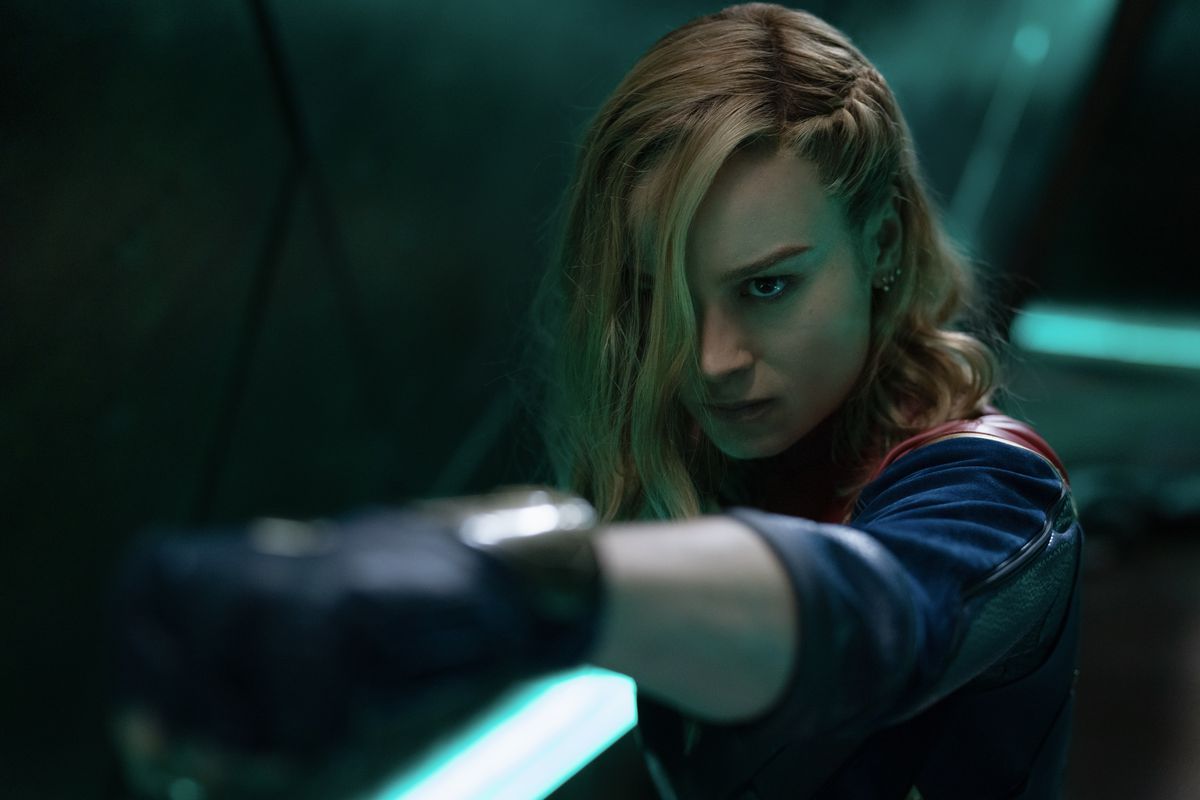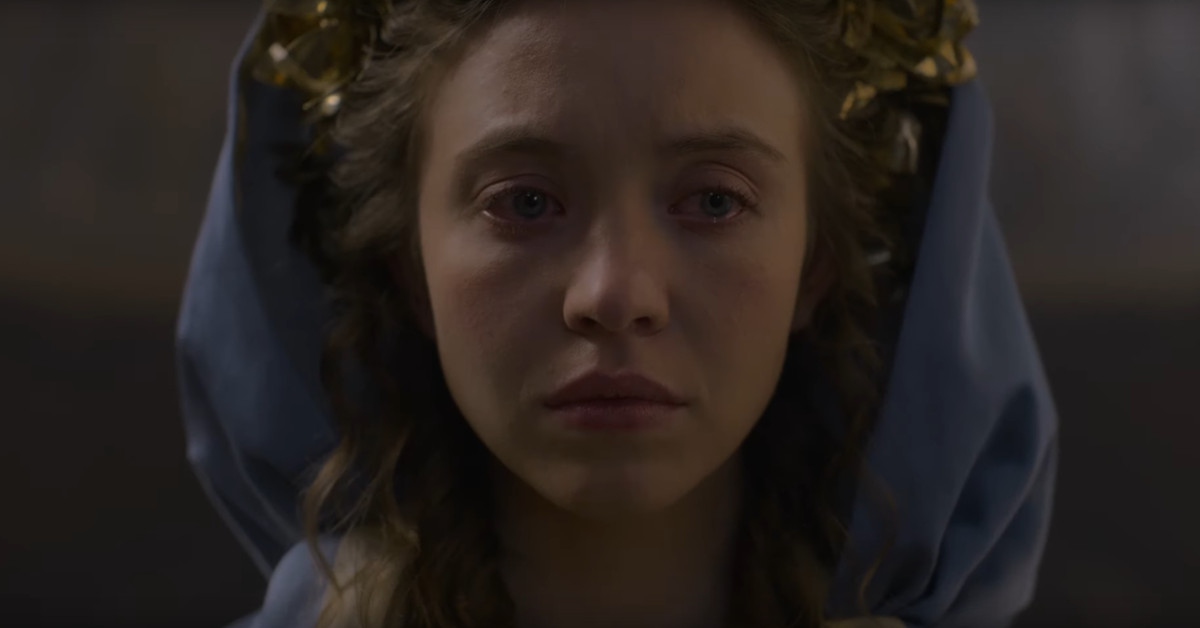The Marvel Cinematic Universe team-up movie The Marvels has a downright unfair amount of work cut out for it. Consider the baggage on its doorstep. It is:
Here’s the good news: The Marvels shoulders every one of these concerns like it isn’t even trying. And the even better news? It’s fun as hell, even if you don’t know about any of this stuff.
:no_upscale()/cdn.vox-cdn.com/uploads/chorus_asset/file/25068013/GRO_01822_RC.jpg)
Director Nia DaCosta, who previously helmed 2021’s Candyman remake, has inherited all the downsides of a project set in a shared universe, and few of the upsides. But the good stuff she has to work with? She makes it sing.
First and foremost is the film’s cast, pulled from three previous MCU ventures with no prior interaction before The Marvels, and very little development leading up to it. Brie Larson’s Carol Danvers/Captain Marvel is the biggest victim of that lack of development: Her one solo outing, Captain Marvel, was a ’90s period piece that did nothing to establish her in the MCU’s present. And it spent most of its run time with Carol as an amnesiac, less clearly drawn than the other Avengers. Her Avengers: Endgame role added no information or enlightenment; she just showed up as a quiet bruiser.
Teyonah Parris’ Monica Rambeau is similarly undefined. She’s a child in Captain Marvel; her investigator role in WandaVision was strictly support work, and she exited that series with powers that were never shown off in full.
The best and most fully realized of The Marvels’ three main protagonists is the one who brings them together. Iman Vellani’s Kamala Khan/Ms. Marvel is a goddamn delight, a giddy fan of Captain Marvel and the Avengers who also happens to have one of the cosmic whatsits that kicks off the plot of The Marvels. The bangle Kamala inherited from her grandmother, which activated her latent mutant powers, is one of two Quantum Bands sought after by villain Dar-Benn (Zawe Ashton), who needs them to save her dying world — by dooming others, of course.
:no_upscale()/cdn.vox-cdn.com/uploads/chorus_asset/file/25068022/ALP1720_TRL_comp_WTA_v0079.1376.jpg)
Kamala is a wonderful silver bullet, both the reason The Marvels is a good time even for viewers who aren’t fully caught up on the MCU tapestry surrounding it, and also a reminder that Marvel’s movie continuity can be a hoot and not a burden for people who engage with it from the right perspective. Kamala — a Pakistani American teen and amateur superhero trying to protect her hometown, Jersey City, and placate her worried family (who are in on her superpowered secret) — is literally tangled up in the plot when Dar-Benn’s schemes cause all three women’s powers to get tied together. Carol, a loner off in space, is forced to team up with Monica and Kamala when they all discover that using their powers causes them to switch places.
Through Kamala’s eyes, DaCosta is able to succinctly introduce the audience to Carol and Monica. Larson and Parris do a whole lot with the very little the script gives them. At a brisk 105 minutes, The Marvels doesn’t have much time to do anything deeply, but DaCosta keeps the camera intimate when there’s no room for the script to be, giving both actors just enough room to convey a level of depth I wish the film had time for. Carol Danvers and Monica Rambeau are weird characters. They’re both alienated by recent events in their lives, and longing for some kind of connection that they could have had but were robbed of.
With three credited writers and reported reshoots, The Marvels feels stitched together with dental floss when its characters have to give way to the film’s plot, which is underexplained and slapdash. The script, co-written by DaCosta, Megan McDonnell (WandaVision), and Elissa Karasik (Loki), tries to give Dar-Benn pathos and a complicated motivation for her acts of destruction. But there’s simply no time to give her reasons credence, or even see them through. One imperiled planet in the film’s second act is simply abandoned mid-battle, and no one ever says whether it or its endangered inhabitants survived!
:no_upscale()/cdn.vox-cdn.com/uploads/chorus_asset/file/25068006/GRO_09769_R.jpg)
But while focusing on The Marvels’ plot can be maddening, focusing on everything else is a delight. The combat scenes in particular, choreographed by fight coordinator Liang Yang, are a small marvel, making inventive use of the heroes’ place-swapping affliction to construct manic action with tremendous clarity. The Marvels is surprisingly confident as an action film, giving its heroes more physical conflicts than you might expect, given their cosmic powers.
In its best moments, The Marvels just throws wonderful ideas at the screen. There’s a planet of people who only sing, a space station full of cats that blithely devour furniture and humans alike, an animated depiction of Kamala’s internal monologue — the movie can feel like a mood board assembled by an overcaffeinated Star Trek fan, with a sense of imagination suitable for reminding the audience that comic books can be cool in the moment that you’re reading them, as opposed to for what they promise in the future.
A frequent criticism of the Marvel Cinematic Universe films is that they feel more like TV than cinema: episodic, never resolving, and always teasing the next thing. The Marvels won’t dissuade anyone from that notion. In fact, it’s the most like a TV show that an MCU film has felt, with its incremental updates about what existing characters have been up to since their last episode, and the various serial threads leading into and out of it. But like a good episode in a lousy season, The Marvels reminds the fans why they’re watching — and it might even be someone’s favorite installment in the ongoing story.
The Marvels officially debuts in theaters on Nov. 10.








